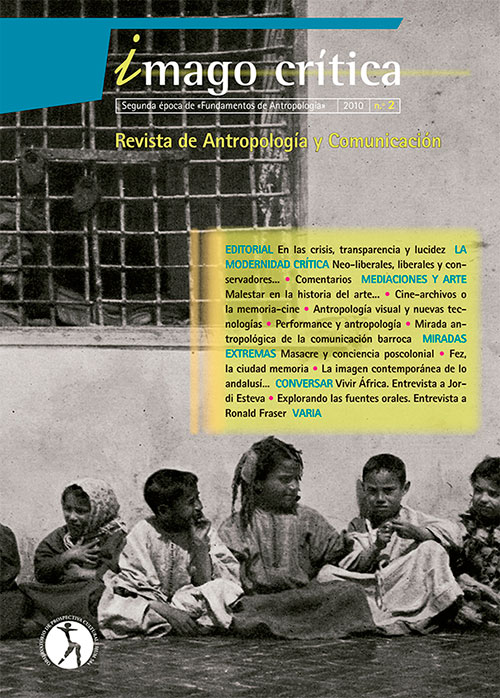Malaise in art history: on the anthropology of images by Han Belting and Georges Didi-Huberman.
Keywords:
art, anthropology, art historiography, Hans Belting, Georges Didi-HubermanAbstract
This article analyzes “the anthropological turn” taken in art historiography in the last few decades. For this, we take as a common element the questioning of the modern notion of representation; what David Summers calls “modern philosophical representationalism”. We analyze in greater detail the project of an anthropology of images developed by the two authors closest to the continental European historiographical tradition, Hans Belting and Georges Didi-Huberman, and explore their explicit connections with Aby Warburg’siconology.
References
BELTING, Hans (1983), L’histoire de l’art est-elle finie?, París: Gallimard, 1989.
BELTING, Hans (1995), Art History after modernism, Chicago/Londres: The University of Chicago Press, 2003.
BELTING, Hans (2001), Pour une anthropologie des images, París: Gallimard, 2004
BELTING, Hans (2005), “Image, Medium, Body. A New Approach to Iconology”, Critical Inquiry, 31, invierno de 2005,
CESTELLI GUIDI, Benedetta (ed.), (2008), Storia dell’arte e antropología, Ricerche di Storia dell’Arte, n.º 94, 2008.
CLIFFORD, James (1988) The predicament of culture. Twentieth-Century Ethnography, Literature and Art, Cambridge (Mass.): Harvard University Press.
DANTO, Arthur (1994), “The End of Art”, en LANG, Berel (ed.), The end of art, Art and philosophy, vol. 2, Nueva York: Haven Publications, pp. 5-35.
DIDI-HUBERMAN, Georges (1992), Ce que nous voyons, ce qui nous regarde, París: Minuit.
DIDI-HUBERMAN, Georges (2007), L’image ouverte. Motifs de l’incarnation dans les arts visuels, París: Gallimard, 2007.
ELKINS, James (2006), “On David Summers’s Real Spaces”, en James Elkins, Is Art History Global?, Londres: Taylor & Francis, 2006, pp. 41-70.
FOSTER, Hal (1996), The Return of the Real. The Avant-garde at the End of the Century, Cambridge (Mass.): The MIT Press.
FREEDBERG, David (1989), The Power of Images: Studies in the History and Theory of Response, Londres/Chicago: University of Chicago Press.
FREEDBERG, David; GALLESE, V. (2007), “Motion, emotion and empathy in aesthetic experience”, Trends in cognitive science, 11, 5, mayo de 2007, pp. 197-203.
GELL, Alfred (1998), Art and agency, Oxford: Oxford University Press.
MITCHELL, W.J.T. (1986), Iconology. Image, text, ideology, Londres/Chicago: University of Chicago Press, 1986.
OSBORNE, r.; TANNER, J. (eds.), (2007), Art’s agency and art history. New Interventions in Art History, Oxford: Blackwell Publishing.
SEVERI, Carlo (ed.), (2003), “Image et anthropologie”, L’homme, n.º 165, enero-marzo de 2003.
SUMMERS, David (1993), “Representation”, en Robert S. Nelson, Richard Shiff, Critical terms for art History, Chicago/Londres: The University of Chicago Press, 1993, pp. 3-20.
SUMMERS, David (2003), Real Spaces: World Art History and The Rise of Western modernism, Londres: Phaidon Press, 2003.
VV.AA. (1996), “Visual Culture Questionnaire”, October, vol. 77, Cambridge (Mass.): The MIT Press, 1996, pp. 25-70.
VV.AA. (2005), Anthropologies of Art, Williamstown, MA: Sterling and Francine Clark Art Institute.
VV.AA. (2007), “Le moment du Quai Branly”, Le débat, n.º 147, noviembre-diciembre de 2007
Downloads
Published
Issue
Section
License

This work is licensed under a Creative Commons Attribution-NonCommercial-ShareAlike 4.0 International License.












